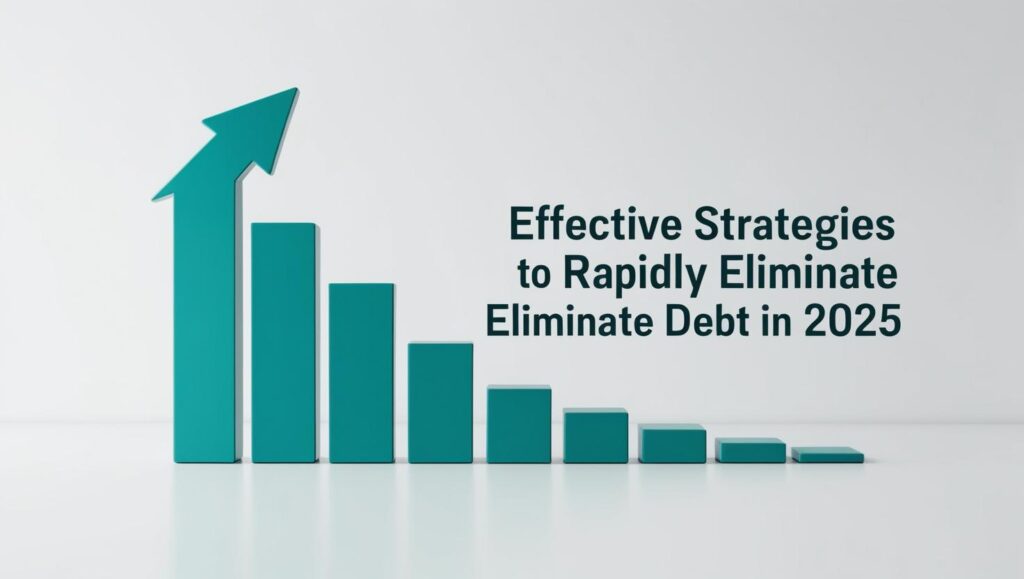Effective Strategies to Rapidly Eliminate Debt in 2025

As we enter 2025, many individuals are seeking effective strategies to eliminate debt and achieve financial freedom. Implementing a structured plan can significantly accelerate debt repayment and reduce financial stress. Below are key strategies to help you pay off debt swiftly this year.
1. Embrace the New Year as a Fresh Start
The beginning of a new year offers an excellent opportunity to reassess your financial situation and set clear debt repayment goals. Utilize this time to create a comprehensive plan that addresses all outstanding debts, including student loans, credit card balances, car loans, personal loans, and home equity lines of credit (HELOCs).
2. Establish an Emergency Fund
Before aggressively tackling debt, it’s crucial to have a safety net for unexpected expenses. Aim to save an initial $1,000 as a starter emergency fund. This reserve helps prevent additional debt accumulation when unforeseen costs arise.
3. Implement the Debt Snowball Method
The debt snowball method involves focusing on paying off your smallest debts first, regardless of interest rates. Here’s how it works:
- List Your Debts: Write down all outstanding debts from smallest to largest balance.
- Prioritize Payments: Allocate extra funds to pay off the smallest debt while maintaining minimum payments on others.
- Build Momentum: Once a debt is cleared, redirect its payment amount to the next smallest debt.
This approach provides quick wins, boosting motivation and encouraging continued progress. While it may not be the most cost-effective method in terms of interest savings, its psychological benefits can be significant.
4. Consider the Debt Avalanche Method
Alternatively, the debt avalanche method focuses on paying off debts with the highest interest rates first:
- Order Debts by Interest Rate: List your debts from highest to lowest interest rate.
- Target High-Interest Debt: Direct extra payments toward the debt with the highest rate while maintaining minimum payments on others.
- Proceed Down the List: After paying off the highest-interest debt, move to the next one on the list.
This method can lead to greater interest savings over time but may require more discipline, as initial progress can seem slower.
5. Create Financial Margin for Debt Repayment
Finding additional funds to allocate toward debt can expedite the repayment process. Consider the following strategies:
- Reduce Unnecessary Expenses: Review your budget to identify and cut non-essential spending.
- Increase Income: Pursue side jobs or freelance opportunities to boost earnings.
- Sell Unused Items: Generate extra cash by selling items you no longer need.
- Pause Investments Temporarily: Consider pausing retirement contributions to focus on debt repayment, then resume once debts are cleared.
- Adjust Tax Withholdings: Ensure you’re not overpaying taxes, which can free up monthly income for debt payments.
Implementing these measures can create the financial flexibility needed to pay off debts more quickly.
6. Evaluate Debt Consolidation Options
Consolidating multiple debts into a single loan with a lower interest rate can simplify payments and potentially reduce the total interest paid. Options include personal loans, balance transfer credit cards, or home equity loans. It’s essential to assess the terms carefully and ensure that consolidation aligns with your overall financial goals.
7. Plan for Early Mortgage Payoff
For homeowners, paying off a mortgage ahead of schedule can lead to significant interest savings and financial freedom. Strategies include making extra principal payments, refinancing to a shorter term, or allocating windfalls like bonuses or tax refunds toward the mortgage. Achieving a mortgage-free status can provide peace of mind and increase financial flexibility.
8. Stay Motivated and Seek Support
Embarking on a debt repayment journey requires persistence and motivation. Celebrate small victories along the way and consider sharing your goals with friends or family for accountability. Utilizing financial management tools and resources can also provide guidance and track your progress.
By adopting these strategies and maintaining a disciplined approach, you can make significant strides toward eliminating debt and achieving financial freedom in 2025.
All writings are for educational and entertainment purposes only and does not provide investment or financial advice of any kind.






